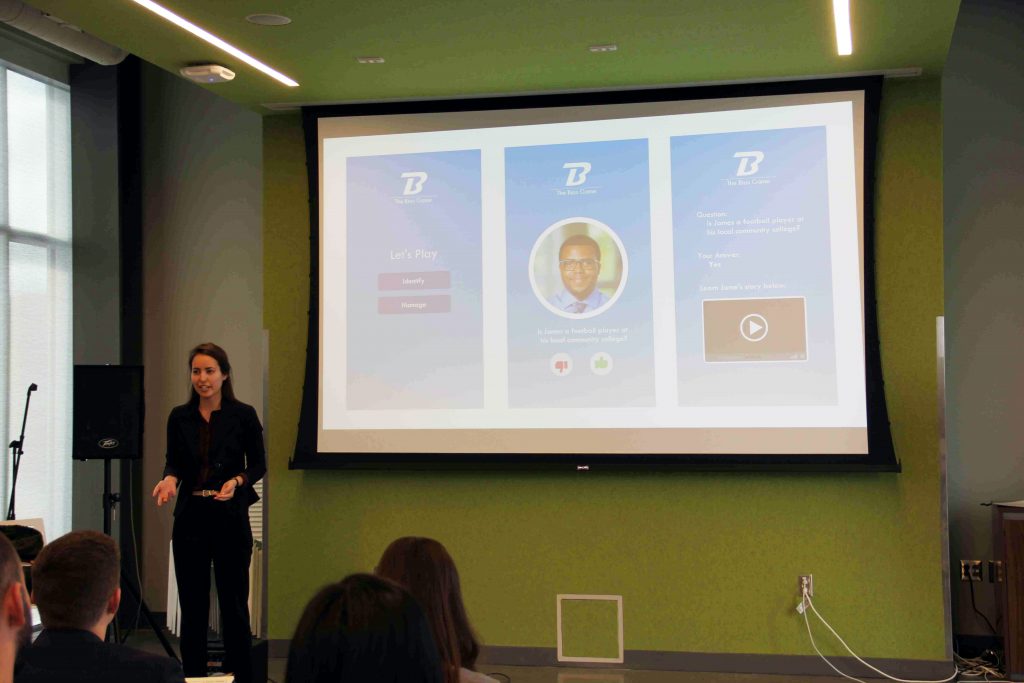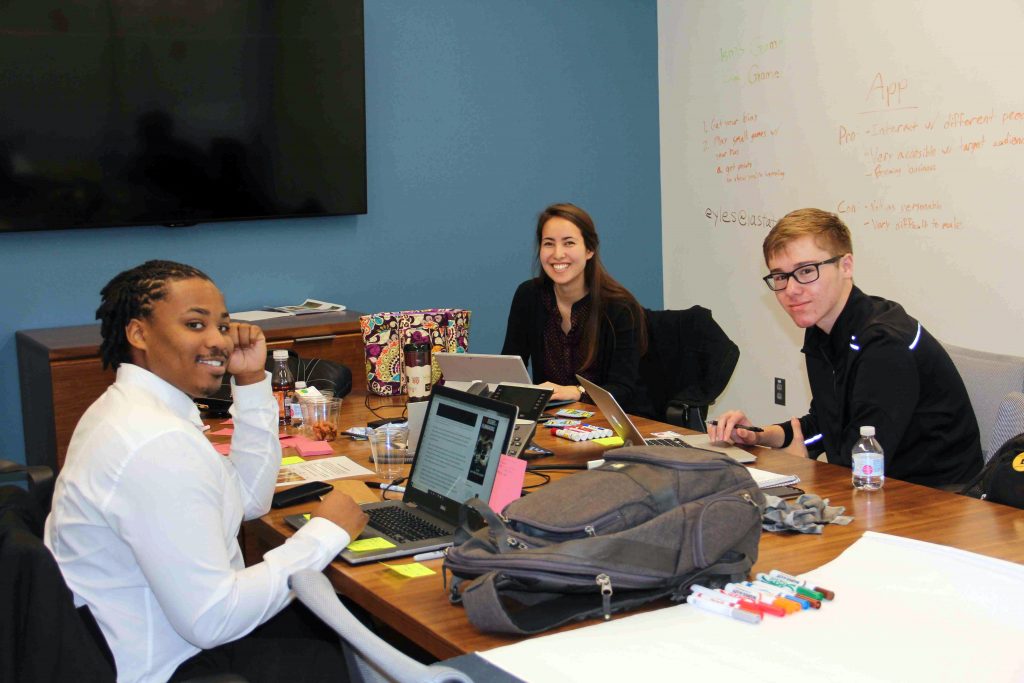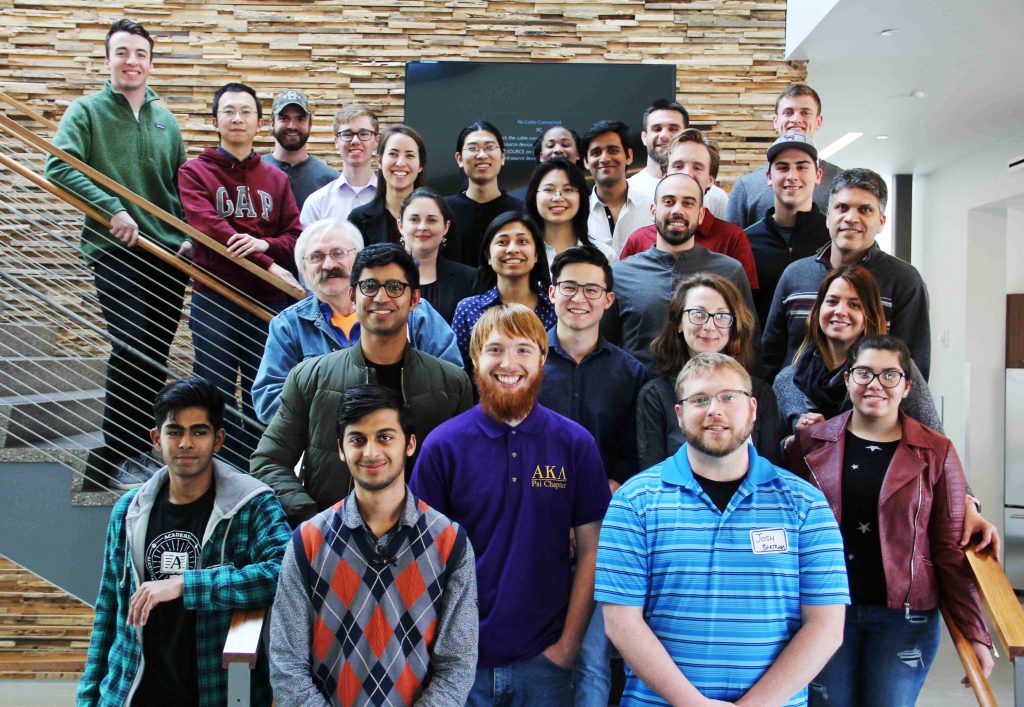
An industrial engineering student learned about the importance of teamwork and collaboration through her participation in Iowa State’s Innovation Prize contest.
Andrina Helgerson, a senior in IE, was part of one of 10 teams to compete in the 2nd annual Innovation Prize contest which took place on March 30 and 31. The event, which was sponsored by Iowa State’s Pappajohn Center for Entrepreneurship and the Agricultural Entrepreneurship Initiative, consisted of teams of four who conceived an idea, developed it through collaboration, and then presented the final pitch to a panel of four judges. Teams were given 24 hours to create pitches focused on one of three categories: Ag Tech, Ed Tech, and Global Impact.

Helgerson’s team competed against two other teams in the Ed Tech category and was composed of herself plus Rhett Dempsey, a freshman in entrepreneurship/ marketing; Justin Roberson, a graduate assistant in Multicultural Student Affairs; and Erin Gibson, an academic advisor for IMSE. Helgerson said she enjoyed working with a group that had a diverse skillset.
“This contest was fun in that I was surrounded with people of different backgrounds and mindsets. I enjoyed that each team member thought through problems differently and were able to contribute in different ways to the team,” she said.

The team developed an app-based game – called The Bias Game – in which people can learn more about potential biases they might have and try to counteract those biases through learning more about the cultures of different people. The game presents the user with a photo of an individual who has experienced bias treatment and prompts the user to answer a yes or no question pertaining to the bias treatment the individual experienced. Depending on the user’s answer, they may be promoted to watch a short video of the person explaining the bias treatment they’ve experienced and attempting to dispel any incorrect notations, or stereotypes, that may lead to biased treatment.
Even though Helgerson and her team did not win the contest, she said she learned a lot about effective presentation and networking skills. She also said it taught her about the importance of teamwork.
“I think the biggest takeaway, for me, was understanding the importance of collaboration, as sappy as that sounds. If you were to ask me to think of an innovative idea when first entering this competition, I would have likely given you a blank stare,” said Helgerson. “However, after intermingling and discussing with others, I soon found my brain had plenty of ideas. The energy from those in attendance paired with the support from my team led to huge strides toward new and creative ideas.”
As an IE student, Helgerson was able to take skills and concepts that she’s learned in the curriculum and apply them to the contest. She said that IE 222: Design & Analysis Methods for System Improvements, was especially relevant.

“We learned about the eight wastes in manufacturing and that the most frequently overlooked waste was underutilization of operators’ skills and or knowledge. With only twenty-four hours to develop a pitch and having just met each of my teammates for the first time, we began by addressing our strengths and weaknesses,” said Helgerson. “This allowed the team to see where each member excelled and allow them to use their strengths to best meet our goal.”
Helgerson, who is originally from Ottumwa, Iowa, chose to study IE because of the versatility it will provide her when looking for a career after graduation. She said she liked how IE focuses on systems that are already in place and attempts to improve them.
“It’s like a logic puzzle but on a whole new level,” she said.
She plans to graduate in the fall of 2018 and is currently debating if she wants to go into industry or pursue an advanced degree. As an undergraduate she has had the opportunity to work with IMSE assistant professor Stephen Gilbert in Iowa State’s Virtual Reality Application Center which has exposed her to the field of human computer interaction. Regardless of what she does after graduation, Helgerson said IE has been an excellent choice for her undergraduate studies.
“I chose industrial engineering because I love understanding why systems work the way they do and I like seeing how small adjustments can make huge impacts on how a system operates.”
